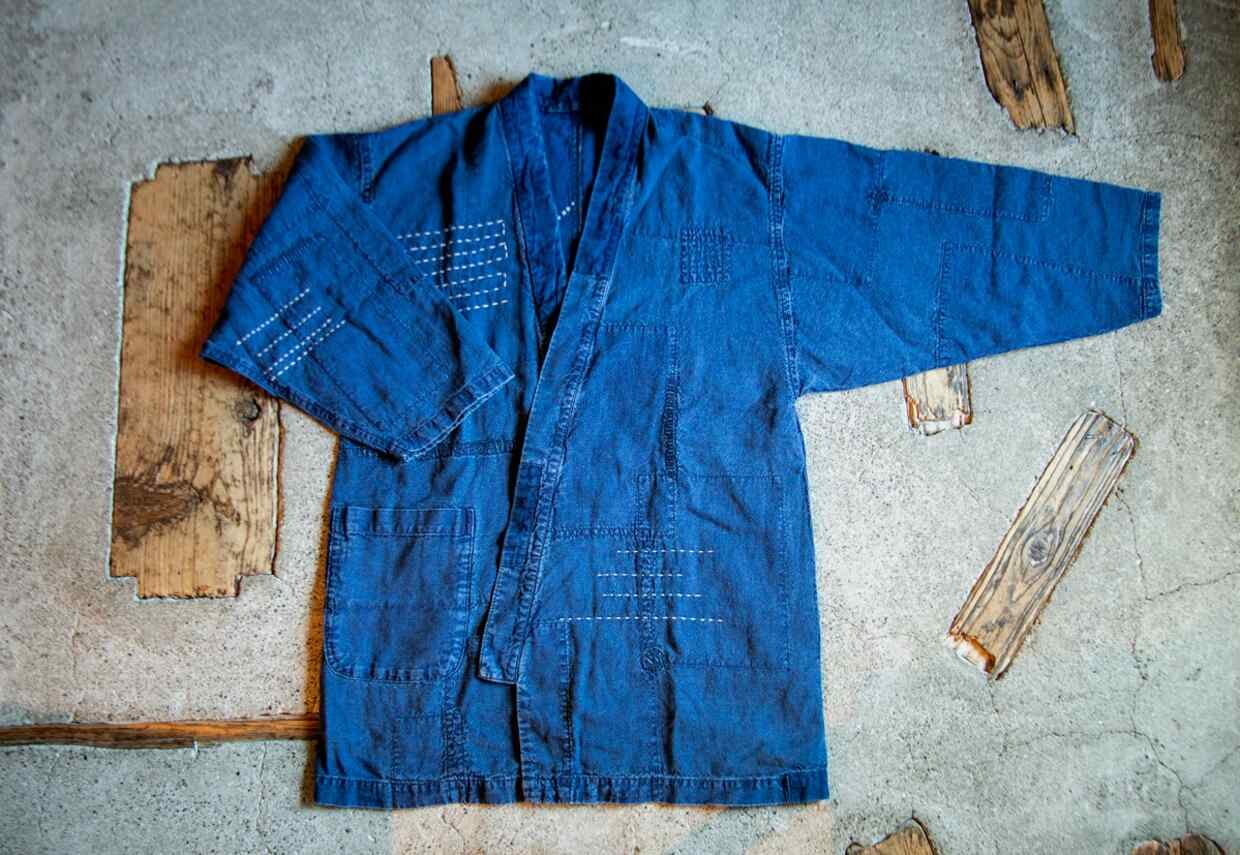True blue: Tokyo’s cult shop for indigo style
Christina Ohly Evans visits a unique Daikanyama boutique
Known as the Brooklyn of Tokyo, Daikanyama is a hipster maze of fashion boutiques, bike shops, micro-breweries and brunch spots. This low-key neighbourhood at the edge of Shibuya is a charming mishmash of concrete structures and glassy storefronts. There’s T-Site’s modernist block of a bookshop, but also traditional wooden buildings such as Kyu Asakura House – a refined relic of the Taisho era that’s now a museum.
A linen-canvas jacket by Blue Blue Japan, Okura’s in-house brand | Image: Yasuyuki Takagi
Copying this old-world style is Okura: a boutique on a quiet Daikanyama backstreet built to resemble a traditional Japanese storehouse, and dedicated to the centuries-old craft of indigo dyeing. Behind well-weathered noren curtains, rustic wooden beams and floorboards provide the perfect setting for a pared-back range of clothing, accessories and decorative objects. “We make items to last a lifetime,” says owner Gen Tarumi, who opened the two-storey shop in 1993. “We adhere to a made-in-Japan ethos. From the dyeing techniques we use, such as bassen and itajime, to the unisex, often modern silhouettes we design, we are proudly Japanese.”
The traditional dye is made from leaves of the Japanese indigo plant, Persicaria tinctoria, fermented in rice wine and wheat bran to create pure tints that range in hue from a saturated navy to aqua to sky-blue. While the bassen technique uses silk-screen printing, itajime is a type of shibori resist-dyeing where the fabric is folded and sandwiched between two pieces of wood to create graphic patterns with negative spaces – used to striking effect on T-shirts and cushions.
Blue Blue Japan silk-knit neckties, about £57 | Image: Yasuyuki Takagi
Such unique garments, infused with character and rich colour, have attracted fans from as far afield as Europe and the US. Leather-goods maker Bill Amberg goes for the “amazing shirts”, while shoemaker Tim Little of Grenson is a fan of in-house brand Blue Blue Japan, which offers pure-indigo-dyed trousers (Y26,000, about £184), as well as Sashiko coveralls (about £276) and jackets (from about £213). “Our brand is based on old farm workwear called noragi, which was mended with cloth from the inside, with the stitching seen on the outside,” says Tarumi.
Blue Blue Japan itajime T-shirt, about £135, and example of silk-chiffon scarf | Image: Yasuyuki Takagi
Haori jackets (about £404) have a similar wabi-sabi look, patchworked from pieces of denim and displayed along the stairwell, while for women dresses and kimono-esque tops graduate through myriad indigo hues. “Indigo gradually fades over time to reveal the beauty of many different shades of blue,” says Tarumi. “It can transfer to the body, but it’s easily removed with soap and water. You might not want to wash it off, however; indigo is known to have antibacterial and insect‑repellent properties.”


